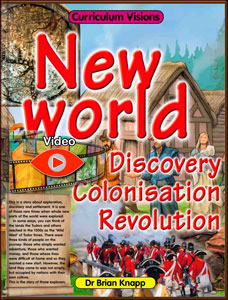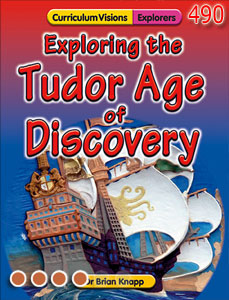In June 1606, King James I, who had become king after the death of Elizabeth, allowed a group of London merchants, called the Virginia Company, to start a trading post in North America.
Three ships left Plymouth with 108 men and boys, and instructions to settle Virginia, find gold and a sea route to China. There were no women on these first ships. It took 144 days, and 40 people died at sea.
They made landfall on 26 April, 1607, and named the site Cape Henry, in honour of Henry Frederick, Prince of Wales, the eldest son of King James. Sealed orders from the Virginia Company were opened which told them to seek an inland site for their settlement which would give protection from enemy (Spanish) ships.
Jamestown is founded
In the following days, the ships sailed inland upstream along the James River (naming it after the king) looking for a suitable location for their settlement. On 14 May, 1607, the colonists chose Jamestown Island partly because it was not occupied by Native Americans.
The first fort
The settlers quickly set about building a fort.
Within a month, James Fort covered an acre on Jamestown Island. However, it soon became apparent why the Native Americans did not live there. Jamestown Island was a swamp and away from most areas suited to hunting game such as deer and bears. It was also infested with mosquitoes and the salty water of the tidal James River was not good to drink.
Trouble sets in
Many of the settlers were not well-equipped for such a hard life. Some were ‘gentlemen’ not accustomed to manual or skilled labour; the others were farmers.
They were short of skilled craftsmen. Many suffered from saltwater poisoning and most of the early settlers died of disease and starvation.
For the first two years the colony survived on supplies brought from England. Despite these troubles, more settlers arrived. By the time the investors in London sent out their second supply ship, having received no gold or anything else valuable from the colonists, their patience was starting to run out. They demanded that the colonists start paying their way. The new governor of the colony, John Smith, talked the investors around, convincing them that profits would come eventually.
Smith was a good leader and he managed to set up some trade with the local Native Americans. But relations with them were never good. Smith was attacked by the local Powhatan Americans during a trip upriver and (legend has it) was only saved by the pleas of Chief Powhatan’s young daughter, Pocahontas.
Edge of starvation
The colonists had not planned to grow their own food. Instead, they expected that trade with the locals would supply them with enough food between supply ships. But the Native Americans had very little spare food to start with. The Jamestown colonists could not have known it, but they had arrived during a bad drought.
The winter of 1609–1610 became known as the “starving time” as over 80 per cent of the 500 settlers died of starvation. It took a new governor, Lord de la Ware, and his supply ships to get the colony back on its feet.
John Rolfe
John Rolfe was the first man successfully to grow and export tobacco in the colony. Rolfe was able to make his fortune. It was he who married the Native American Princess Pocahontas on 24 April, 1614.
Once tobacco had been established as an export cash crop, investors became more interested and groups of them united to create plantations called ‘hundreds’.
By 1617, the colonists were exporting 50,000 pounds of tobacco a year to England and were beginning to make enough money to make sure they could survive and prosper.






